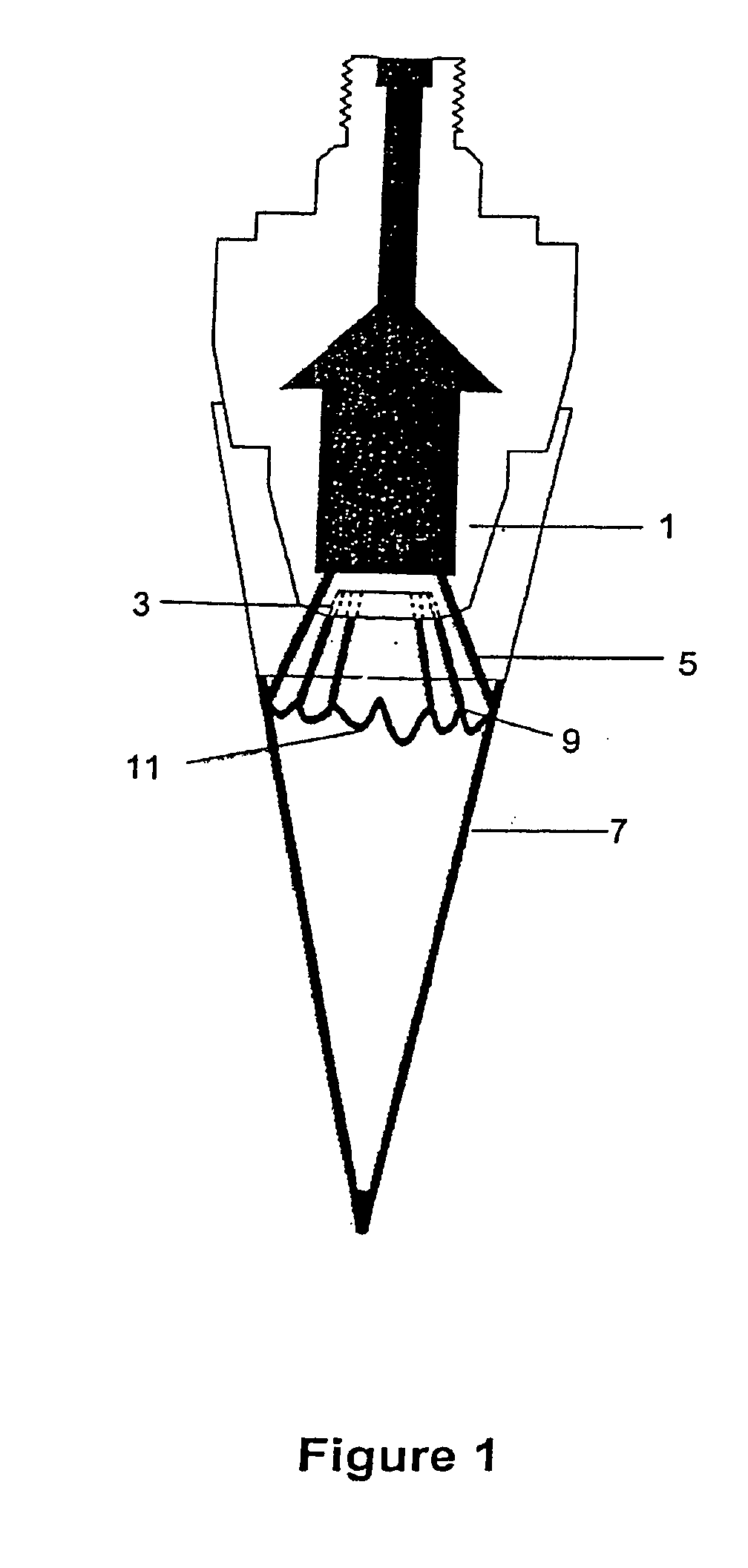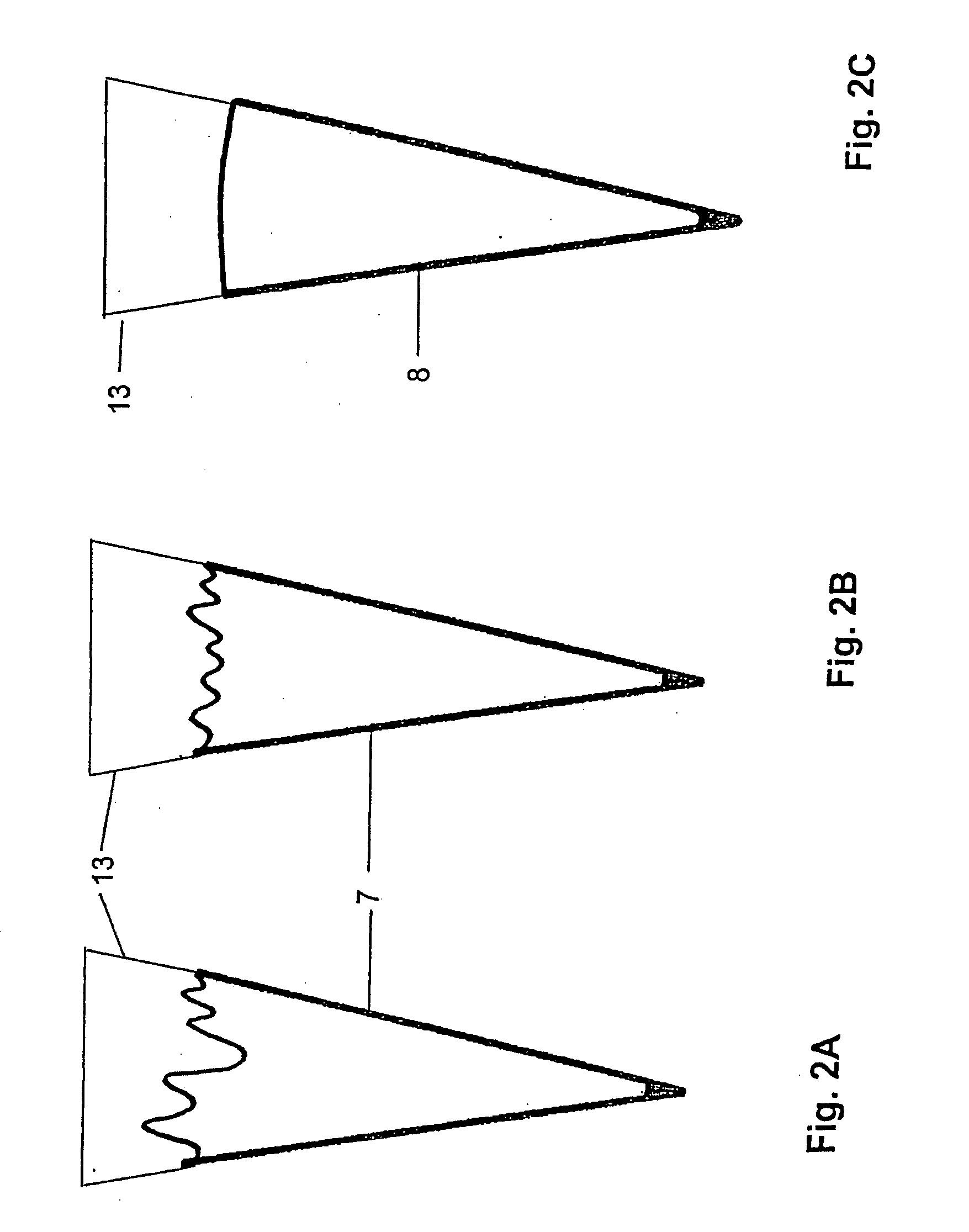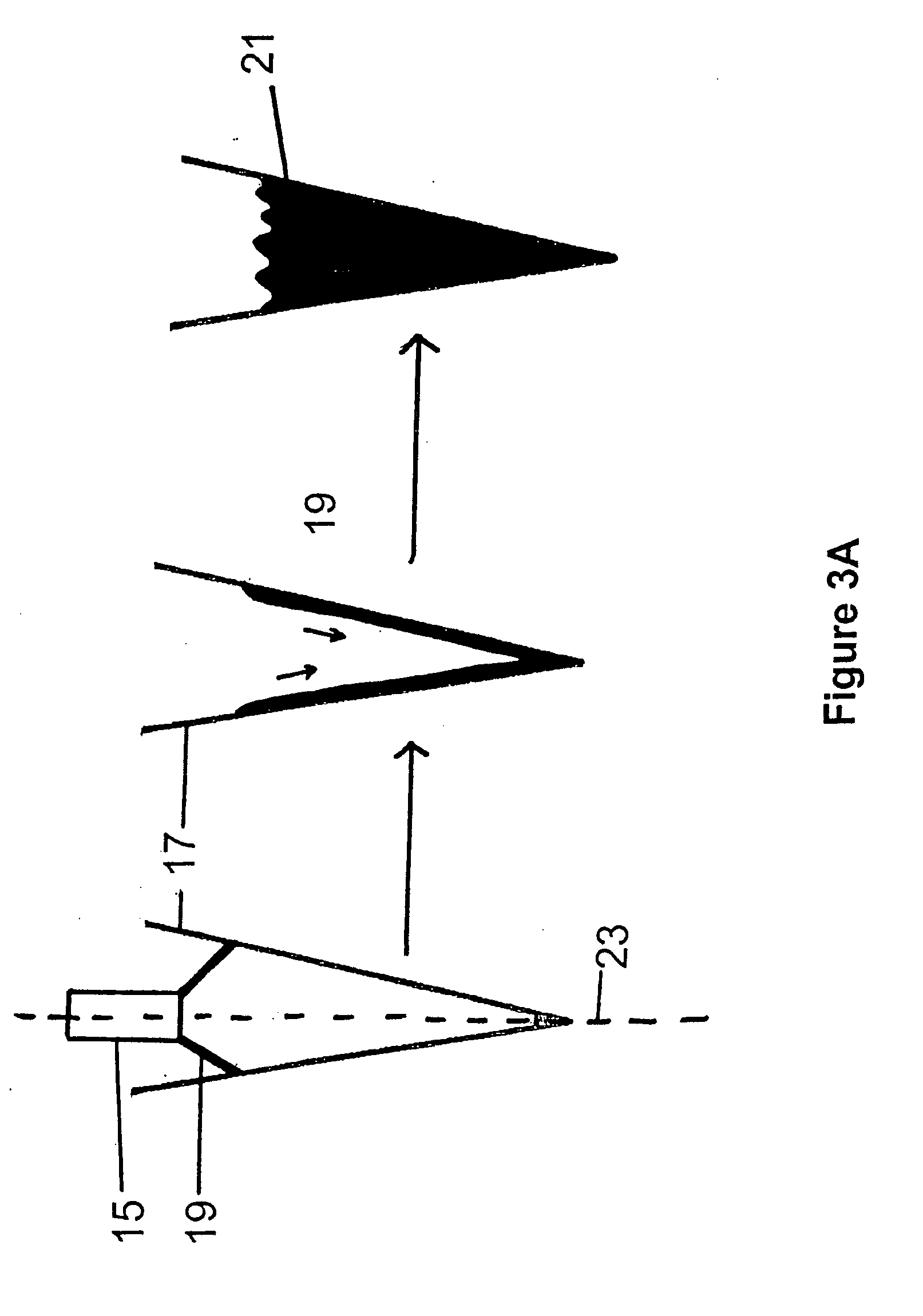Method and apparatus for producing edible fat-based shell for confectioneries and confectioneries produced thereby
a technology of confectioneries and fat-based shells, which is applied in confectionery, baking, baking, etc., can solve the problems of inability to use real chocolates in this process, difficulty in production and packaging, and inability to dipping and enrobing to line the interior of cones and other edible items, etc., and achieves high-efficiency production of such shells.
- Summary
- Abstract
- Description
- Claims
- Application Information
AI Technical Summary
Benefits of technology
Problems solved by technology
Method used
Image
Examples
example 1
[0087] Shower cone recipe for real milk chocolate-based coating (% by weight)
Sugar44.3Cocoa liquor15Cocoa butter19.5Whole milk powder20Anhydrous butterfat1Vanillin0.05Lecithin0.15
example 2
[0088] Shower cone recipe for vegetable fat-based coating (% by weight)
Sugar44.5Cocoa powder9Coconut oil28.3Whole milk powder18Vanillin0.05Lecithin0.15
example 3
Milk Chocolate Cone Made by Showering
[0089] A radially symmetric shower nozzle consisting of twenty-four holes was used to deliver exactly 6 grams of real chocolate at 33% by weight of fat into an empty 110 mm cone sleeve. The formed milk chocolate cone was then filled with vanilla ice cream and frozen. The end consumer of this product removes the sleeve to reveal a milk chocolate cone novelty filled with ice cream. [0090] Coating recipe (% by weight): sugar 52.1, whole milk powder 12, cocoa liquor 13, cocoa butter 21.4, anhydrous butterfat 1, soy lecithin 0.3, vanilla 0.2. [0091] Total fat content: 33% by weight [0092] Particle size: 24-26 microns
PUM
 Login to View More
Login to View More Abstract
Description
Claims
Application Information
 Login to View More
Login to View More - R&D Engineer
- R&D Manager
- IP Professional
- Industry Leading Data Capabilities
- Powerful AI technology
- Patent DNA Extraction
Browse by: Latest US Patents, China's latest patents, Technical Efficacy Thesaurus, Application Domain, Technology Topic, Popular Technical Reports.
© 2024 PatSnap. All rights reserved.Legal|Privacy policy|Modern Slavery Act Transparency Statement|Sitemap|About US| Contact US: help@patsnap.com










